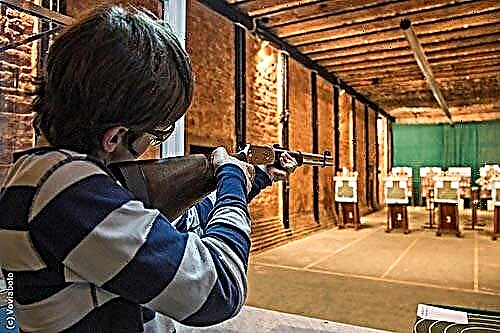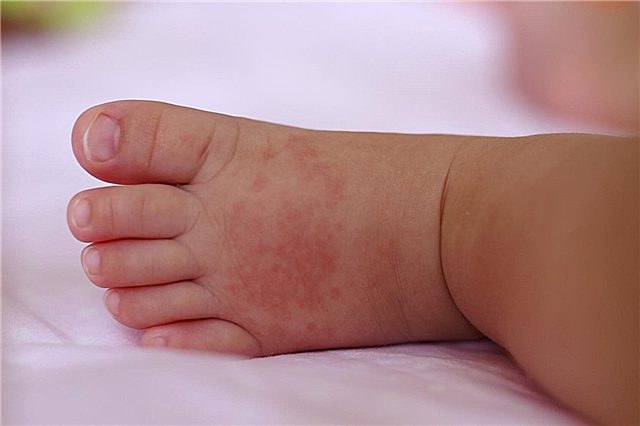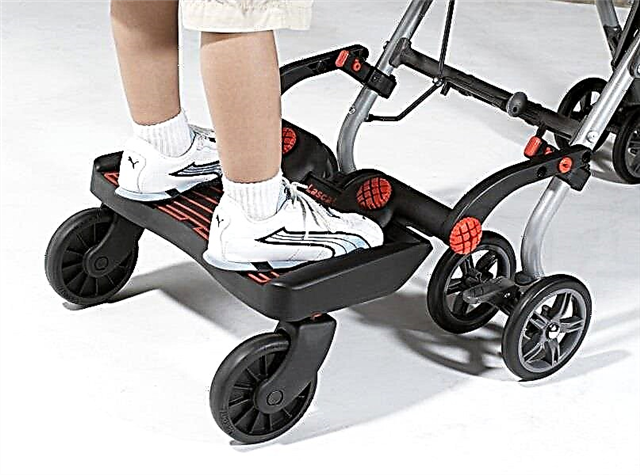Many parents who experience allergies in children are wondering if fever occurs with allergies. Allergic children, as a rule, often suffer from various colds, accompanied by fever. In such situations, it is extremely important to find out whether the child has an infectious disease or whether the temperature is a manifestation of an allergic reaction.
The presence of a temperature in allergies is considered an open issue in the medical environment. There is no definite answer to this question. In any case, the presence of fever in allergies is an atypical symptom. However, there are certain clinical situations when allergies can cause fever.
Temperature for allergies in a child. Possible situations
Acute urticaria
 It is characterized by the appearance of a large number of itchy blisters on the child's skin.
It is characterized by the appearance of a large number of itchy blisters on the child's skin.
In some severe cases, the size of the elements of the rash can reach several tens of centimeters.
Elements most often disappear without a trace within a day.
An increase in temperature in such situations reaches 39 degrees Celsius and is accompanied by muscle and joint pain, swelling of the soft tissues of the face, hands, genitals, large joints.
The child's condition most often requires immediate hospitalization in a specialized hospital, especially in the presence of edema in the face area. After discharge, you need to be under the supervision of an allergist-immunologist.
Insect allergy
Doctors call insect allergy immediate allergic reactions to insect bites. Often an anaphylactic reaction can develop to stings of bees and wasps, with a common urticarial rash, accompanied by an increase in the child's body temperature.
As a treatment, adrenaline is needed. Parents should immediately call the ambulance or inject adrenaline on their own, following the doctor's recommendations.
Drug allergy
- Milian's reaction. On the ninth day of taking Tetracycline, Metranidazole, sulfonamides, the child's body temperature rises, large reddish spots appear on the skin. There may be damage to internal organs. The forecast is favorable. Complications are rare;
- drug fever. Taking antibiotics, carbamazepines and quinidine can cause an allergic reaction with an increase in temperature. Allergy symptoms can occur on the third day of medication. A distinctive feature of the disease is a decrease in heart rate and the disappearance of temperature after discontinuation of the drug;
- serum sickness. Occurs as a result of allergy to vaccines and serums. Body temperature rises, joint pain appears, internal organs are affected. The presence of urticaria, angioedema is characteristic. Recovery occurs in 10 days;
- drug-induced lupus syndrome. It occurs when taking Procainamide, interferons, penicillins, Hydralazine. The child has a fever, a rash, muscle and joint pains. Kidney damage is characteristic. Recovery occurs after the abolition of the causative medication;
- medicinal systemic vasculitis. Allergy symptoms appear one week after using the drug. The child has a fever, rashes like vasculitis appear. Kidney damage may occur with the development of glomerulonephritis. The baby has enlarged lymph nodes;
- erythema multiforme exudative. Often occurs against the background of taking antibiotics, non-steroidal anti-inflammatory drugs. It begins with an increase in temperature to 38 ° C, then target-like elements of rashes appear. There may be chills, muscle and joint pain. The color of the rash is dark burgundy with a purple center. The elements of the rash can vary in shape and size.

Treatment: consultation of an allergist-immunologist is necessary. Antihistamines, ointments with glucocorticosteroids, Metipred are prescribed, in severe cases - detoxification therapy in a hospital setting. The forecast is favorable.
- Stevens-Johnson syndrome. The onset of the disease mimics ARVI, starting with an increase in body temperature. The mucous membrane of the mouth, genitals, eyes are affected. There may be disturbances in the work of internal organs, especially in the nervous system. Typical target-shaped rashes appear no earlier than the fourth day from the onset of the disease. The hands and feet are most often affected. The shape of the rash can be different, the appearance of bubbles is possible, the color is purple-purple. Treatment is carried out in a hospital. The forecast is serious. Serious complications such as myocarditis and encephalitis are not uncommon;
- Lyell's syndrome. Against the background of taking medications, the body temperature rises. Elements of the rash appear after 1 - 2 days. At first, the elements of the rash resemble spots, then bubbles appear, which open up to form an eroded surface. The patient's condition is very grave and requires hospitalization in the intensive care unit.
Complicated hay fever
 Pollinosis is an allergic reaction to pollen, manifested by lacrimation, watery rhinitis.
Pollinosis is an allergic reaction to pollen, manifested by lacrimation, watery rhinitis.
In case of an allergic reaction, immune inflammation occurs in the tissues, which can cause a slight increase in the temperature in a child in the range of 37 - 37.5 ° C.
With the development of complications in the form of sinusitis, otitis media, bacterial conjunctivitis, the increase in temperature may be more significant and reach 39 ° C.
Treatment: antihistamines, glucocorticosteroid sprays, rinsing the nose and eyes. With the development of sinusitis, otitis media and conjunctivitis - treatment together with an ENT doctor and an ophthalmologist.
Year-round allergic rhinitis
Exacerbation of allergic rhinitis in children, especially those with adenoiditis, can lead to an increase in body temperature. This is especially true if you are allergic to house dust and animal hair.
Treatment: otolaryngologist consultation, antihistamines, glucocorticosteroid sprays.
Features of the use of antipyretics in children suffering from allergic diseases
Babies who are prone to frequent allergic reactions should be given very careful medicine for fever. Pharmacies offer a fairly large range of different children's dosage forms containing NSAIDs (non-steroidal anti-inflammatory drugs), but, despite the large selection, parents often face problems.
You need to understand that almost all children with allergies can give a strong allergic reaction to a new medicine. What do doctors recommend? Allergists-immunologists recommend using candles and tablets with NSAIDs without fragrances in such children.
It should be remembered that the use of acetylsalicylic acid (Aspirin) is prohibited for use in children under 16 years of age.
Multi-component powders from temperature are also contraindicated for all allergy sufferers.
Thus, a child's temperature never precludes an allergic reaction. But, in any case, parents should show the baby to the doctor for examination, timely correct diagnosis and treatment.
Article rating:



